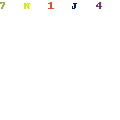St. Kitts and Nevis are in the Caribbean and belong to the Lesser Antilles archipelago. The capital is Basseterre. The distinguishing mark of the island of St. Kitts are the three groups of volcanoes. The highest mountain on St. Kitts is called Mount Liamuiga, it reaches a height of 1,156 m. The rainforest also invites you to visit, which becomes bushier at higher altitudes. Those who orient themselves more north of the volcano can explore sugar cane plantations.
The island of Nevis is only three kilometers from St. Kitts. You can also climb mountains here. The highest is 1,090 m high and is named Mount Nevis.
Both islands are ideal for hiking and climbing. Like no other island in the Caribbean, St. Kitts embodies a place in the lush tropical paradise that is more likely to be found in the South Pacific. The agriculturally unused flat hills are covered with dense forests. It is an intoxicating mixture of sun, sea, air and fantastically rich vegetation that invites you to a relaxing holiday on St. Kitts and Nevis.
According to naturegnosis, English is spoken as the official language in St. Kitts and Nevis. All official documents and applications are issued in this language. You can hear some Creole dialects in everyday life. The largest ethnic group of the population spread across St. Kitts and Nevis are the blacks. These make up about 90 of the total population. 5 percent are mulattos and only 3 percent are South Asians. The whites, especially the British and Portuguese, are clearly outnumbered. They are only one percent.
The largest religious group on St. Kitts and Nevis are the Anglicans, who take first place in the ranking with 36 percent. This is followed by the Methodists with 32 percent and the Catholics with 12 percent. However, there are about 40 other religious groups and beliefs on St. Kitts and Nevis.
St Kitts and Nevis (Caribbean): important dates for your trip
Area: 261 km² (Saint Kitts 168 km²; Nevis 93 km²)
Population: 50,314 (July 2011, CIA). Mainly blacks; some British, Portuguese and Lebanese.
Population density: 193 residents per km²
Population growth: 0.823% per year (2011, CIA)
Capital: Basseterre on St. Kitts (12,880 residents, 2006)
Highest point: Mount Liamuiga, 1,156 m
Lowest point: Caribbean, 0 m
Form of government: St Kitts and Nevis has been a parliamentary monarchy since 1983, represented in the Commonwealth. The constitution dates from the same year. The National Assembly consists of 11 directly elected members, three appointed members and the governor. Nevis is treated as a federal state with its own legislature, and under certain conditions Nevis can break away from the federal government. St Kitts and Nevis has been independent from Great Britain since 1983.
Administrative structure: 14 parishes (Christ Church Nichola Town, Saint Anne Sandy Point, Saint George Basseterre, Saint George Gingerland, Saint James Windward, Saint John Capesterre, Saint John Figtree, Saint Mary Cayon,Saint Paul Capesterre, Saint Paul Charlestown, Saint Peter Basseterre, Saint Thomas Lowland, Saint Thomas Middle Island and Trinity Palmetto Point).
Head of Government: Prime Minister Denzil Douglas, since July 7, 1995
Head of State: British Queen Elizabeth II, represented since January 2, 2003 by the Governor General Sir Edmund W. Lawrence.
Language: The official language in St Kitts and Nevis is English. The colloquial language is Creole English
Religion: Anglicans and other Protestants as well as Catholics
Local time: CET – 5 h
In St. Kitts and Nevis there is no change between summer and winter time.
The time difference to Central Europe is -5 hours in winter and -6 hours in summer.
International phone code: +1 (869)
Internet ID:.kn
Mains voltage: 230 V, 60 Hz. In hotels the voltage can also be 117 V.
St Kitts and Nevis – geography and map
The island of St. Kitts is one of the northern Leeward Islands in the Caribbean. The center of the island is made up of three volcanic groups separated by gorges. The highest point on St. Kitts at 1,156 m is Mount Liamugia. Its northern side is covered, among other things, by sugar cane plantations.
The central mountain ranges and flat hills are rarely used for agriculture and are covered with rainforest, which merges into bushland at higher altitudes. The southwest of Saint Kitts is crossed by a flat peninsula with beautiful beaches.
The almost circular island of Nevis is separated from this peninsula on St. Kitts by a 3 km wide canal. The highest peak with 1,090 m is Mount Nevis (also Nevis Peak). Smaller elevations are Hurricane Hill and Saddle Hill.
On the island you will find long white sandy beaches, turquoise, calm sea and coconut groves.
Almost 40,000 residents live on both islands, more than a third of them in the capital Basseterre (approx. 13,000 residents). The largest city on Nevis (and the second largest city in the country) Charlestown has only about 1,700 residents.
St Kitts and Nevis climate
The Caribbean state of St Kitts and Nevis is warm all year round with night temperatures rarely below 27 ° C and rarely above 30 ° C during the day. The annual precipitation averages 1,400 mm and is fairly evenly distributed over the whole year. The driest months are February to June, the rainy hurricane season is from July to November.
Best time to visit St Kitts and Nevis
Given that in the High season(Mid-December to mid-April) prices are higher and accommodations are fully booked, the best time to visit St Kitts and Nevis is November and early December. Summer (June to August) is also good, but if you are planning on visiting other Caribbean islands, keep some of them in mind during the summer months noticeably hotter than St. Kitts and Nevis.
